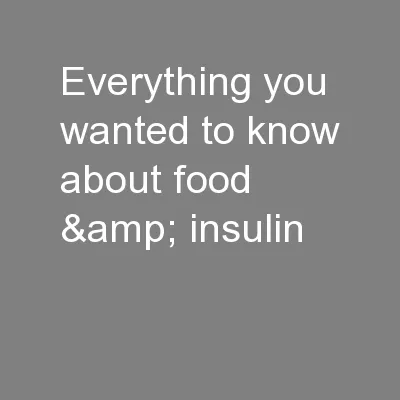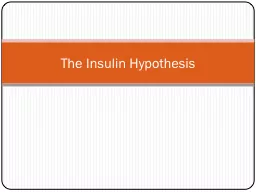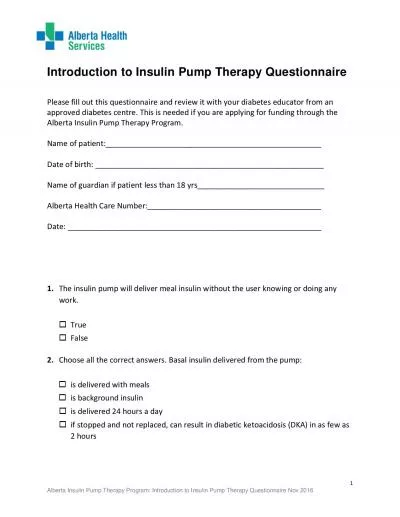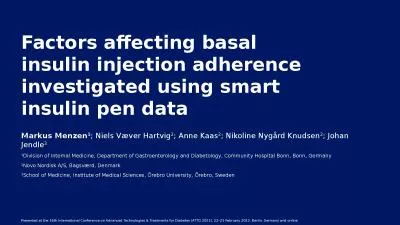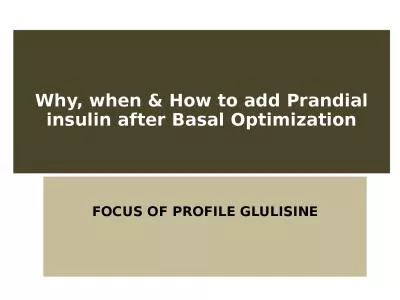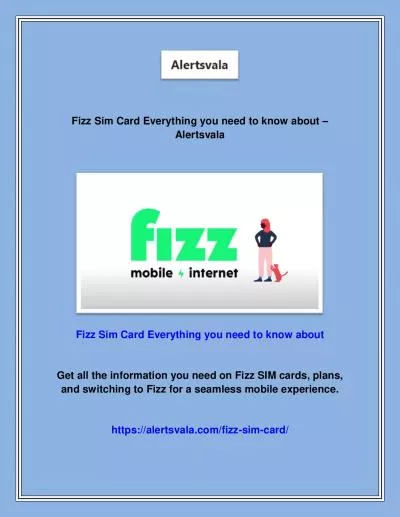PPT-Everything you wanted to know about food & insulin
Author : danika-pritchard | Published Date : 2016-05-14
Stephen W Ponder MD FAAP CDE Scott amp White Clinic Temple Round Rock and College Station And a bunch of other important stuff One goal of diabetes care is managing
Presentation Embed Code
Download Presentation
Download Presentation The PPT/PDF document "Everything you wanted to know about food..." is the property of its rightful owner. Permission is granted to download and print the materials on this website for personal, non-commercial use only, and to display it on your personal computer provided you do not modify the materials and that you retain all copyright notices contained in the materials. By downloading content from our website, you accept the terms of this agreement.
Everything you wanted to know about food & insulin: Transcript
Download Rules Of Document
"Everything you wanted to know about food & insulin"The content belongs to its owner. You may download and print it for personal use, without modification, and keep all copyright notices. By downloading, you agree to these terms.
Related Documents

